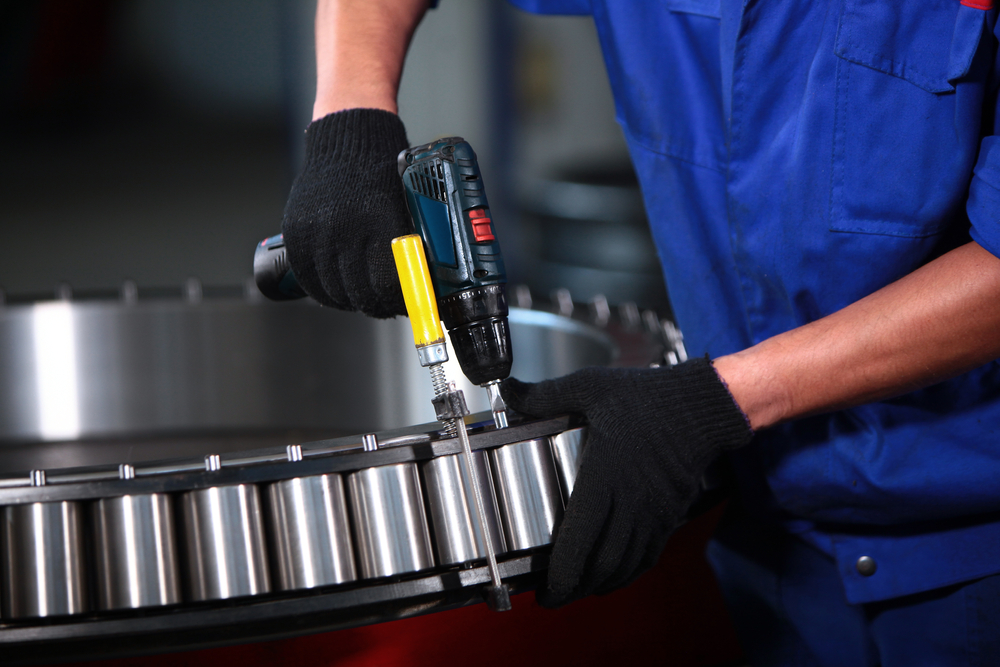How to Identify, Prevent, and Repair Bearing Fluting

Bearing fluting doesn’t start with a bang — it creeps in very quietly. One day your motor is humming; the next, it’s vibrating and running hot. Maybe it’s even seizing altogether? Somewhere deep inside, the bearings have developed tiny pits that have turned into evenly spaced ridges: telltale signs of electrical damage. And once those grooves are carved in, the clock’s ticking. You need to know what’s happening, what causes it, and what you can do to stop it before it takes down your motor for good.
What is bearing fluting?
Fluting gets its name from the pattern it leaves behind. A bearing race will show shallow, washboard-like grooves, often evenly spaced. These are not the result of normal mechanical wear. They’re caused by tiny electrical discharges arcing through the bearing and damaging the metal surface. The damage builds over time, leaving grooves that accelerate wear and increase friction. You might not see the damage until the motor comes apart — but by then, it’s too late. That’s why knowing the symptoms is so important.
Early warning signs: noise, heat, and vibration
You don’t need to see the bearing to suspect fluting; there are plenty of signs and signals that will alert you to a problem. These signals indicate that something’s not right:
- A low-frequency growl or whining sound often develops under load
- Motors might start running hotter, even if current draw hasn’t changed
- Vibration analysis can reveal repeating patterns that match the bearing’s geometry
- In some cases, thermal imaging shows heat concentration around the bearing housing
Get bearing repair or replacement
Now through the end of the month, GES is offering 10% OFF single repairs or 15% OFF 3+ repairs on ABB products, including bearings. If you’re dealing with fluting issues, we’re here to help!

The role of VFDs and stray voltage
Most bearing fluting in modern motors is electrical in origin. The biggest culprit? Variable frequency drives (VFDs). While VFDs control motor speed with precision, they also introduce high-frequency voltage pulses into the motor shaft. These pulses can create a capacitive discharge path through the bearing, allowing current to arc from shaft to race to housing. Add in inadequate grounding, aging insulation, or lack of shaft grounding brushes, and the risk goes up exponentially.
Stopping fluting means breaking the electrical path before it reaches the bearing. The best prevention plans include a mix of hardware and smart design.
- Install shaft grounding rings: These give stray voltage a path to ground without passing through the bearing.
- Use insulated bearings: Electrically isolating the bearing helps block discharge.
- Add common-mode chokes or filters: These reduce high-frequency voltage spikes from the VFD.
- Upgrade your grounding scheme: Properly bond and ground the motor, drive, and control cabinet.
Repairing a fluted bearing isn’t enough
Replacing a failed bearing might get the motor spinning again, but it doesn’t solve the underlying issue. If fluting caused the failure once, it will happen again unless you address the electrical problem. Always investigate the drive, grounding, and shielding setup before putting a repaired motor back into service.
Sometimes bearing failure is just the start. If arcing has gone unchecked, it can damage the shaft, housing, or even circuit components in the drive. That’s when you need more than a parts swap — you need expert diagnostics and repair. From VFD tuning to motor rebuilds, the GES team restores performance with precision, so you don’t have to worry about the long-term effects of bearing fluting.
